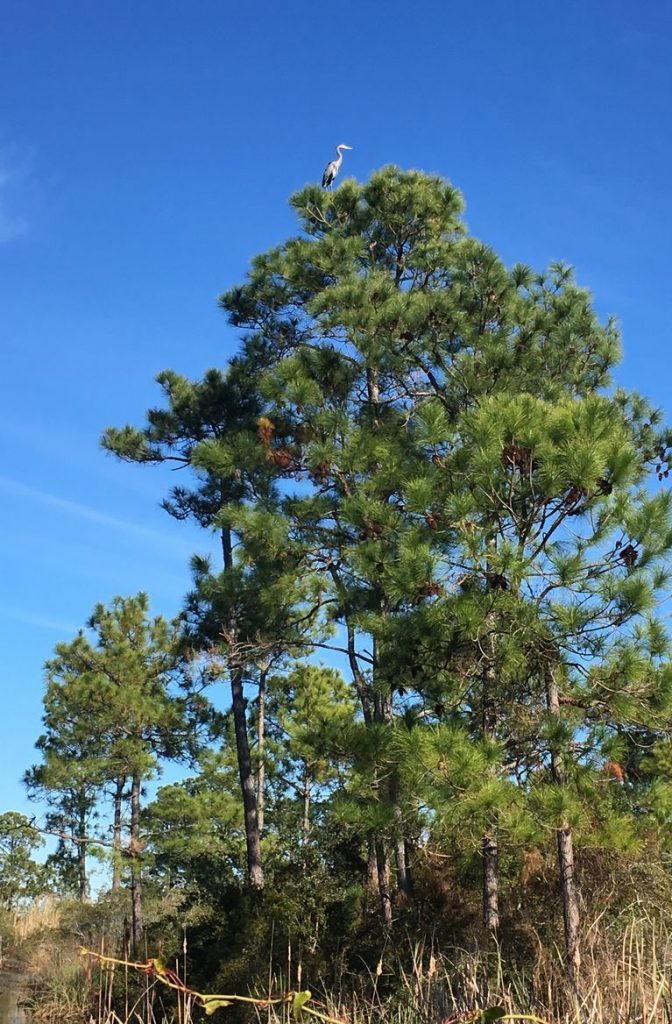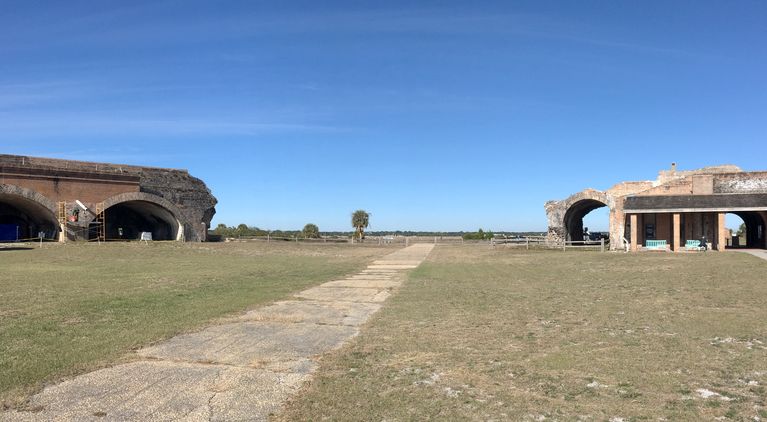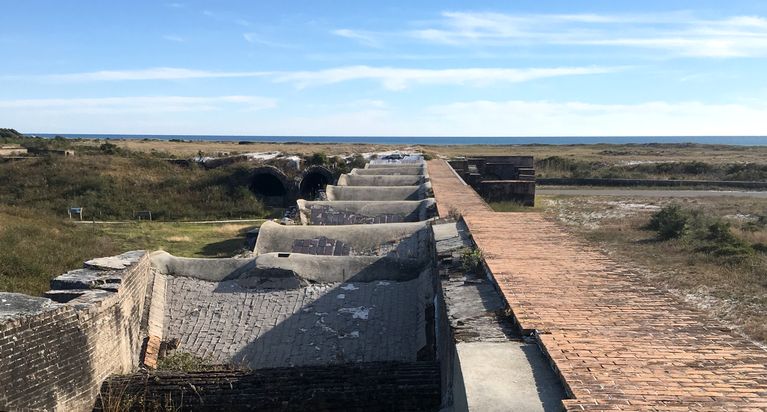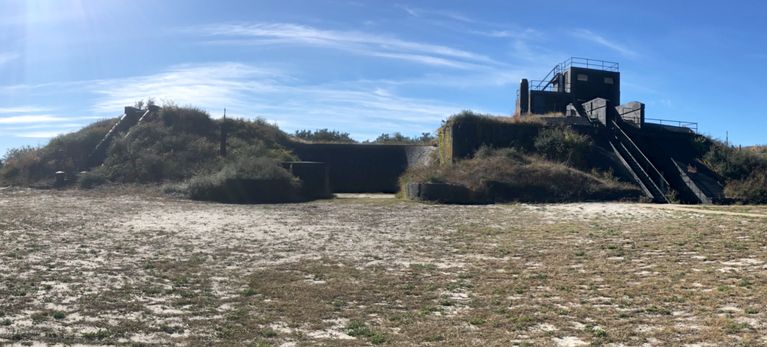After 4 days of R&R at Grayton beach state park, we were ready to move. The weather wasn’t conducive to beach walking (but we did it once anyway). We walked into Seaside for smoked Gouda grits and to Grayton Beach for hot chocolate and coffee. Having exhausted all the reasonable possibilities, we decided to visit Fort Pickens.
Fort Pickens is located on Santa Rosa Island, a barrier island off the Florida Panhandle. The western part of the island remains in its natural state as part of the Gulf Shores National Seashore. The National Park Service manages a campground and the historic fort.
We stayed at the campground for 2 days. Although we could see the city of Pensacola across the bay, the area feels remote; actually getting to Pensacola requires a 17 mile drive. The historic fort is a pleasant walk from the campground on a bike trail. Part of the trail is on the grade of a 3 mile railroad run by the army, affectionately known as the B&F (back and forth) RR.

We left the van in the campground at the mercy of an attack catbird. This one spent the better part of two days trying to drive away his reflection in the rear windows by pecking at him; two days of pecking on the windows!

On the walk to the fort, we heard what sounded like deer snorting. After stopping to locate the sound, we spotted this great blue heron about 50 feet above us in the top of a tree. Not more than a hundred yards down the trail we were surprised by more rustling in the grass. This time it was an armadillo.

He poked his head out, assessed the situation, decided we weren’t a threat and headed off in the other direction.
After the war of 1812, the US built a string of forts along the coastline to protect important harbors from foreign invasion. Fort Pickens was one of these. It is ideally situated at the mouth of Pensacola Bay to guard the harbor and the Navy yard. The fort was built using 21.5 million bricks and the labor of enslaved people. In the era of smooth bore cannon firing round balls, it was a formidable structure.
Improvements in ships and weapons after the Civil War made the fort obsolete. The army constructed a concrete battery (a structure for multiple cannon) inside the original fort. In the process, they managed to set fire to a gunpowder magazine, blowing out a wall of the fort and raining shattered bricks across the bay into Pensacola.

After installing the new battery, the army decided to lower the wall of the old fort by removing the earth. The result is deterioration of the arches.

There are other more modern batteries on the island. Below is arear view of Battery Worth, used from the Spanish-American War until WW II. The concrete pit in the center of the photo is one of two that held eight 12-inch mortars that could lob 700-lb projectiles up to nine miles away.

Nearby on the mainland is the Naval Live Oaks Reservation, land purchased in 1828 as a place to preserve the native live oak trees and as a tree farm (see pictures in previous post). Live oak was used by the navy in building and restoring wooden ships like the USS Constitution and the USS Constellation. Today the area has several hiking trails.